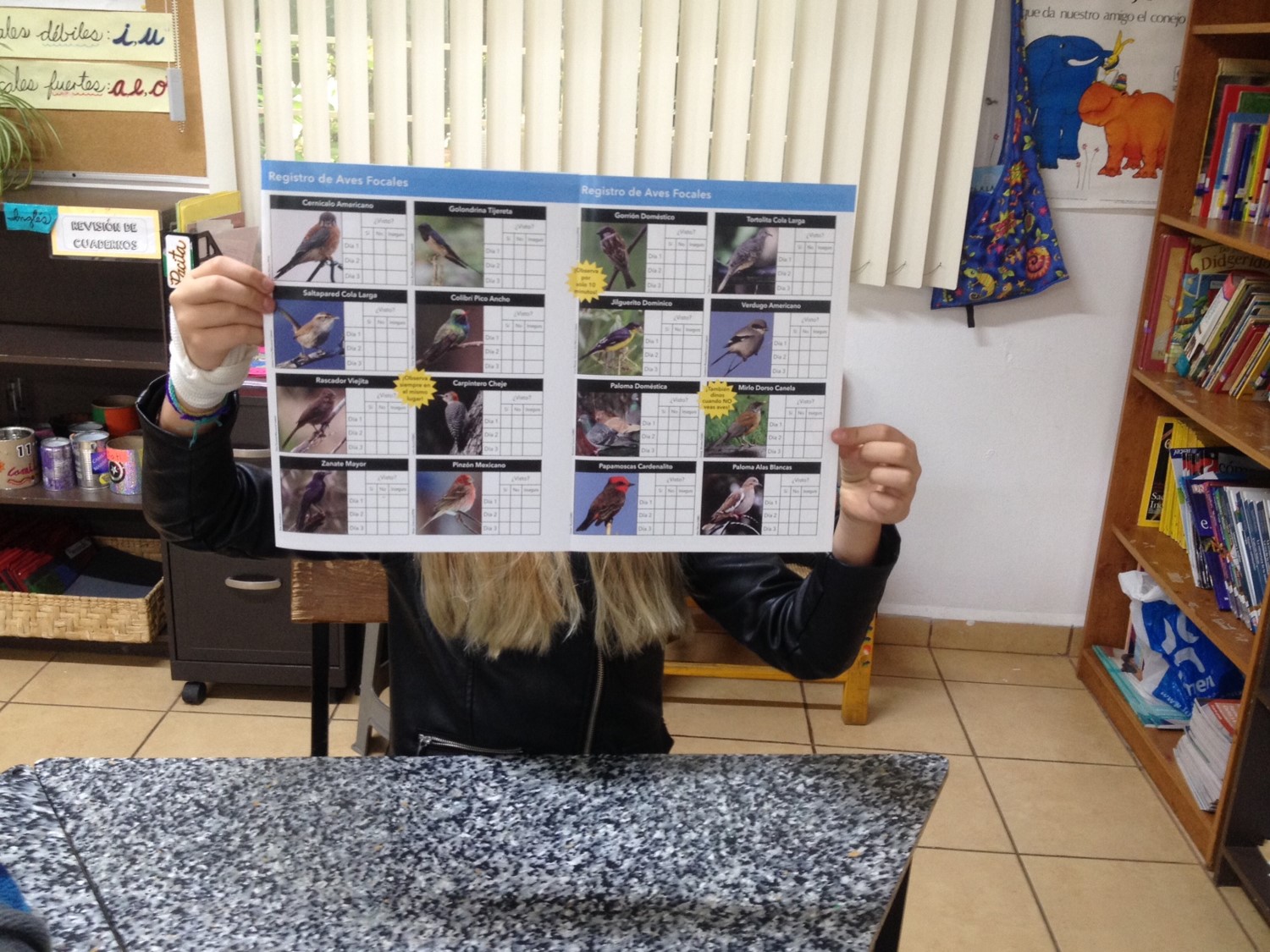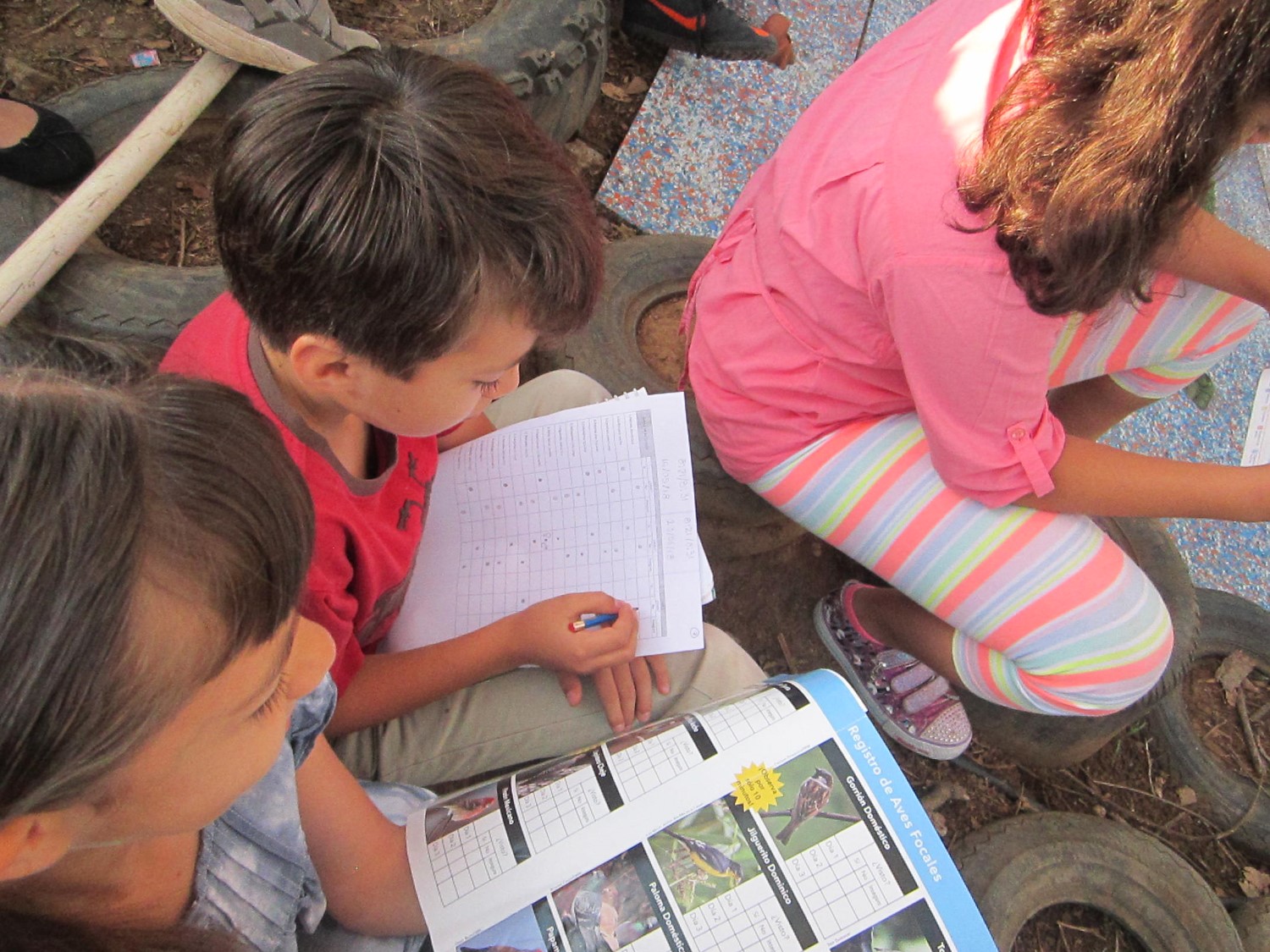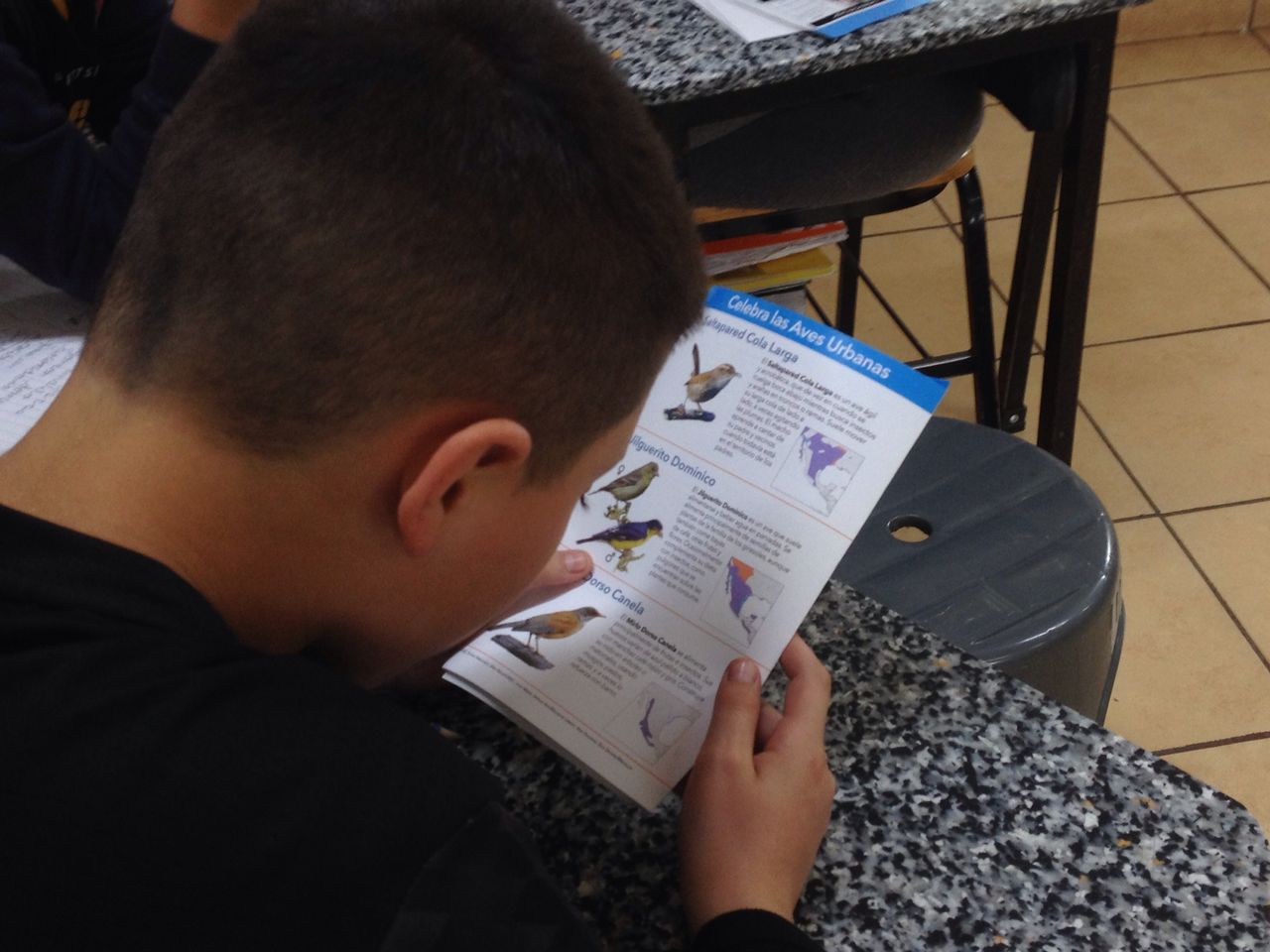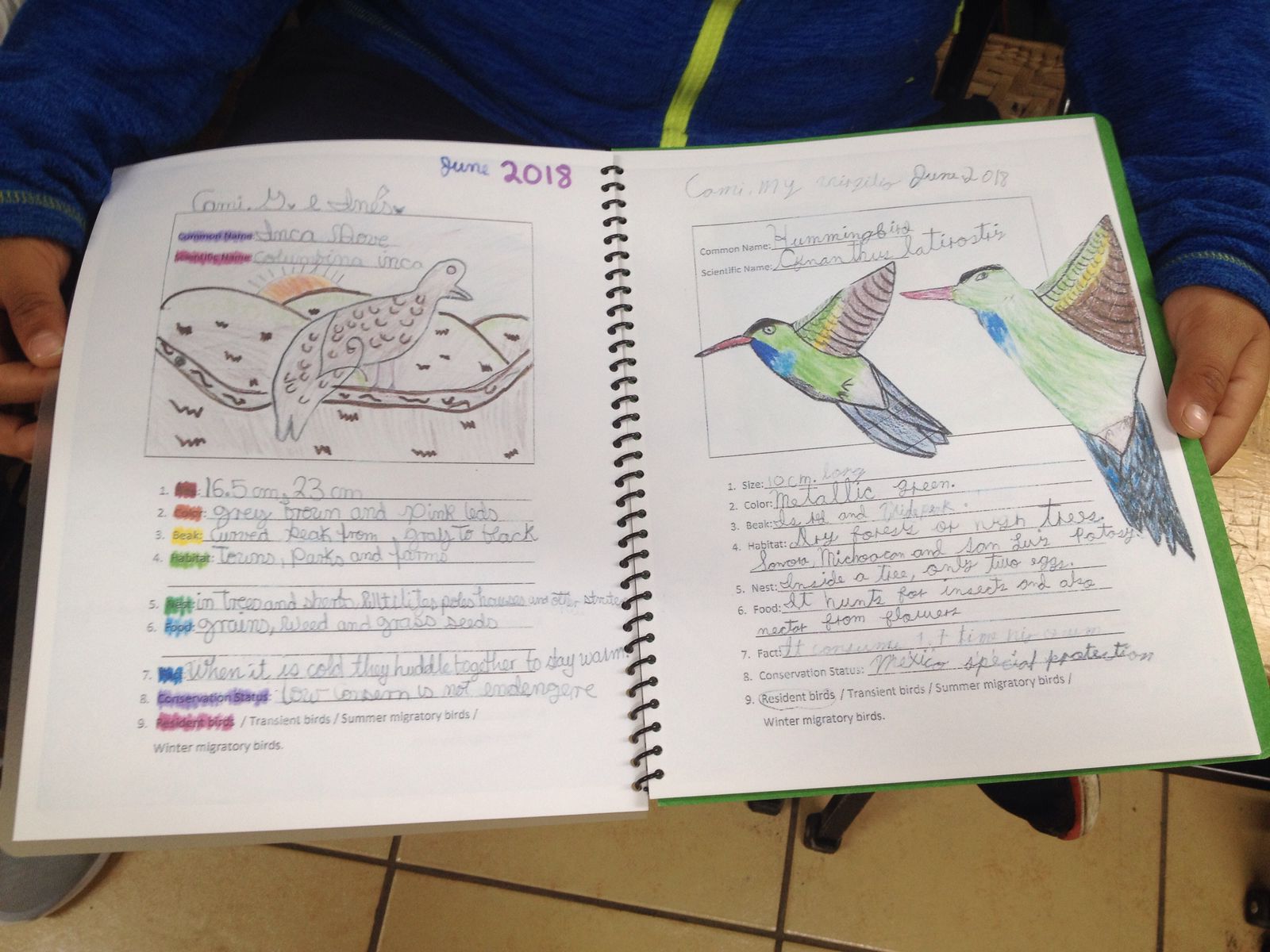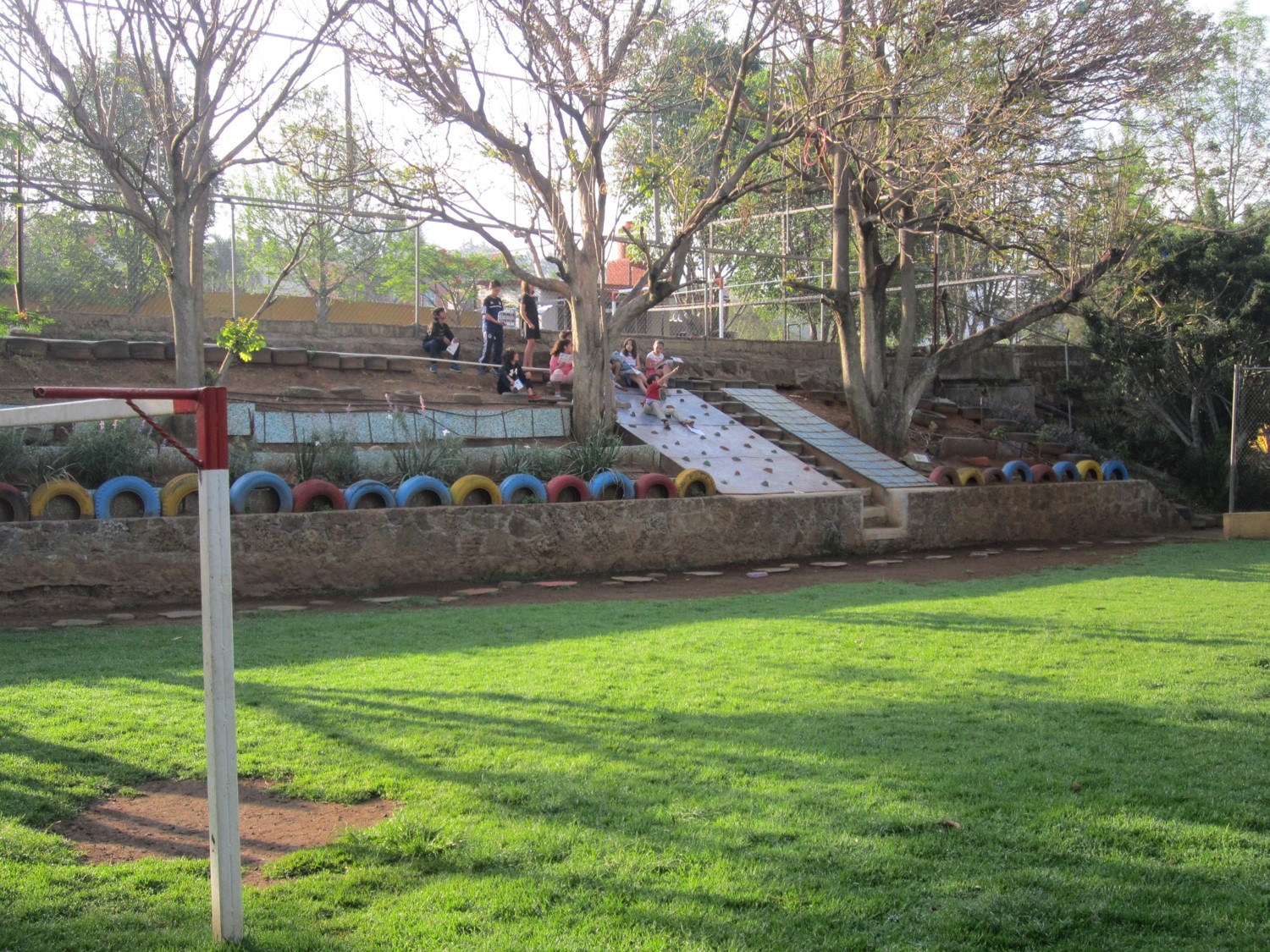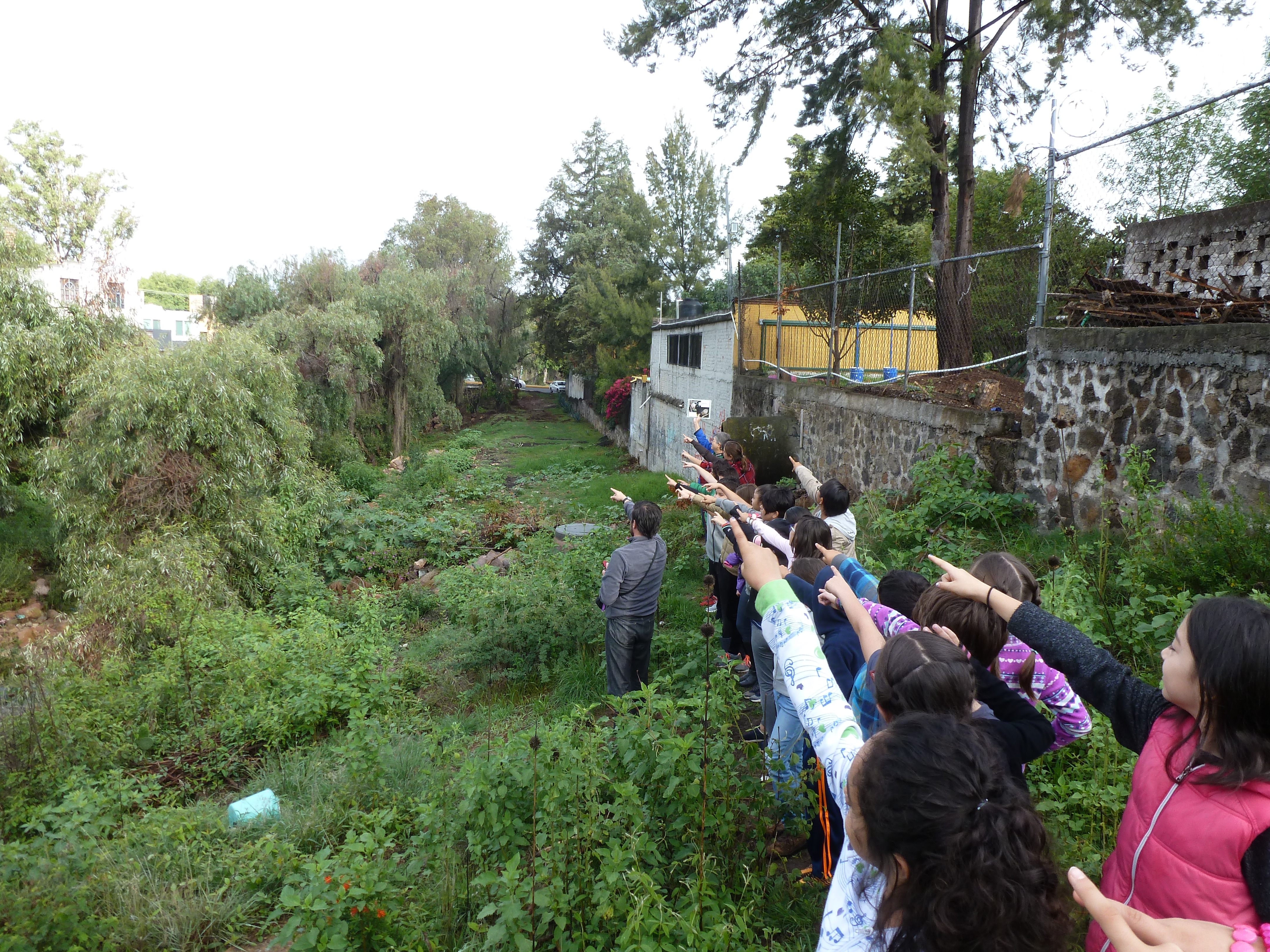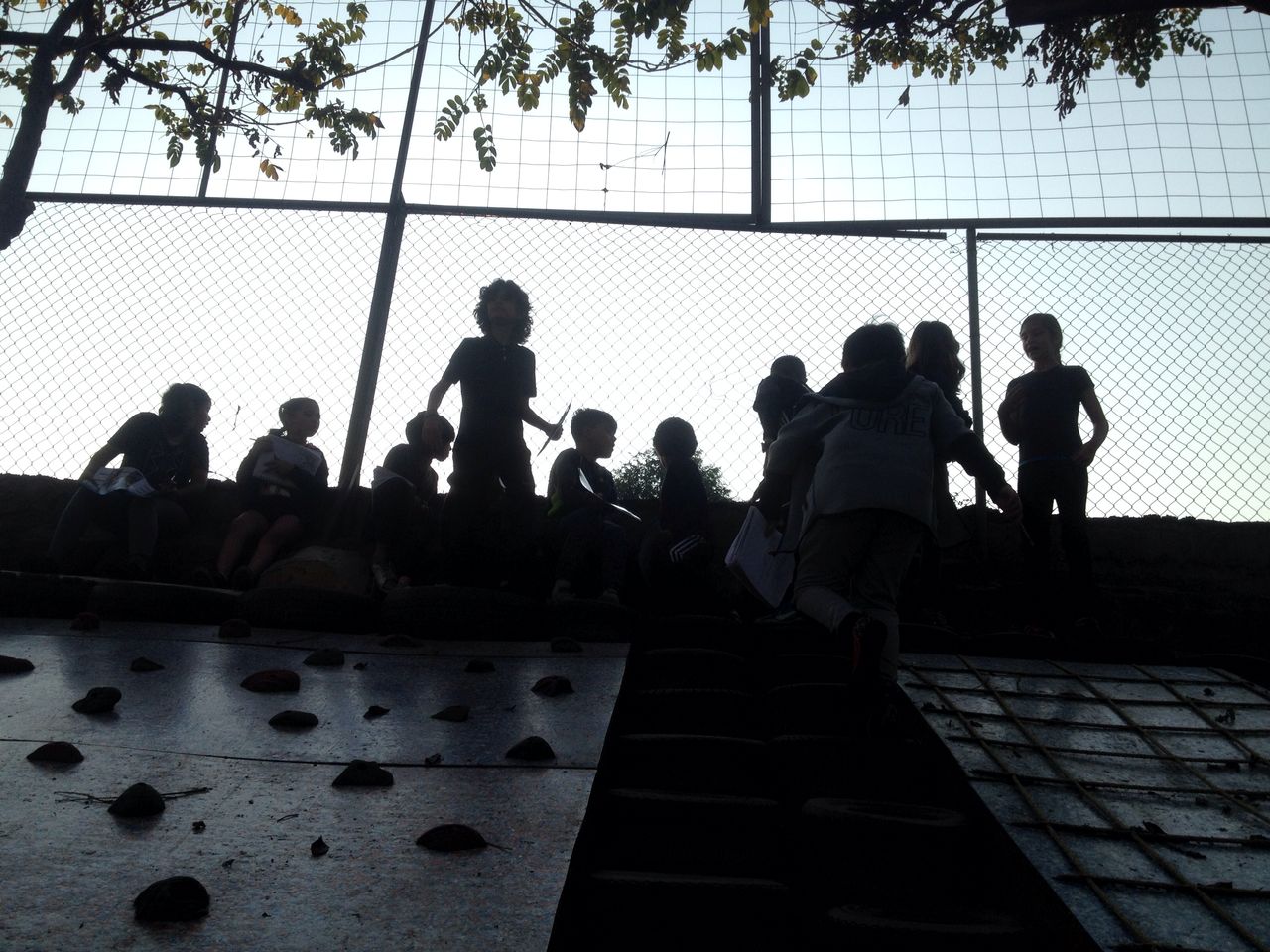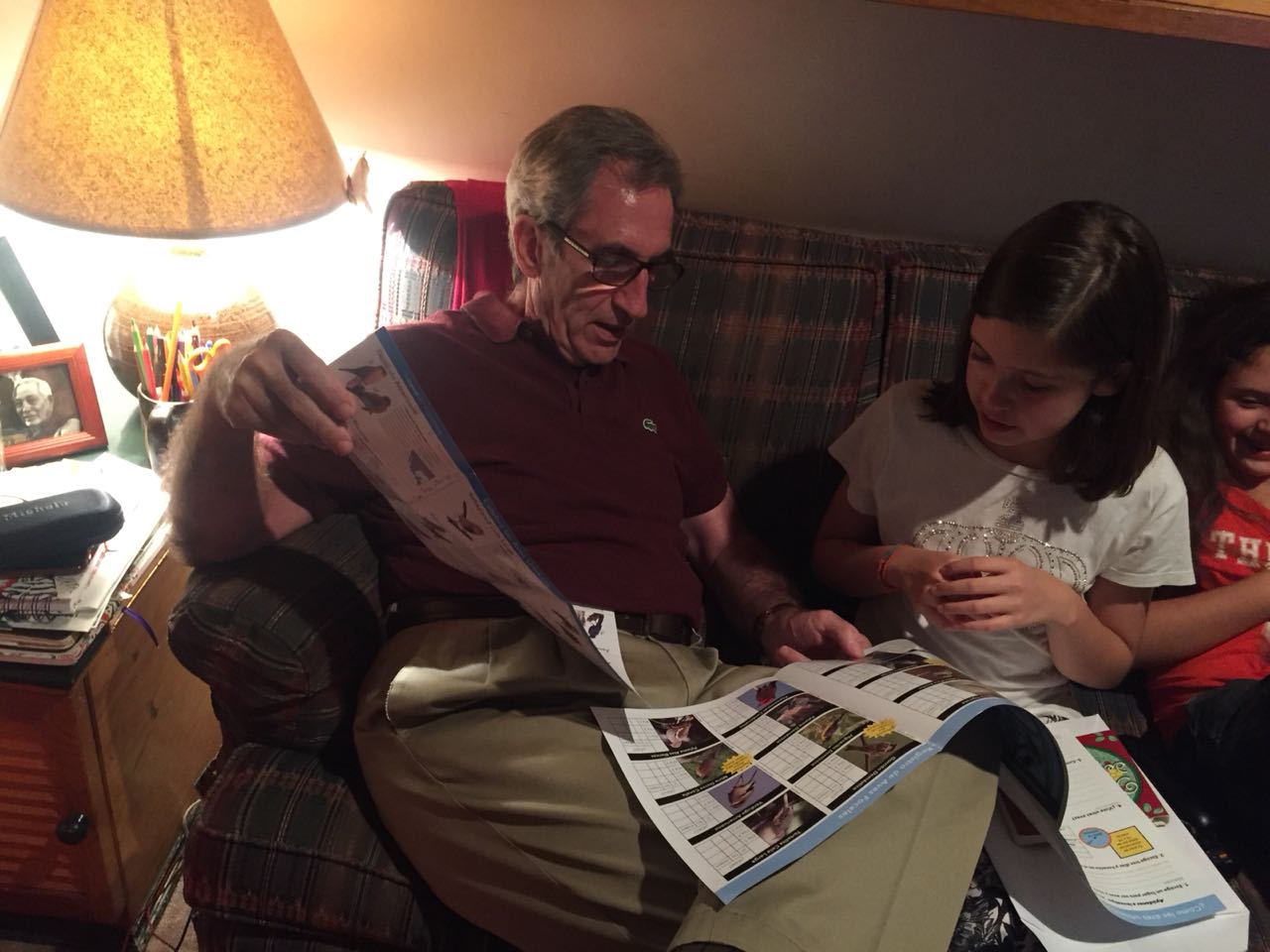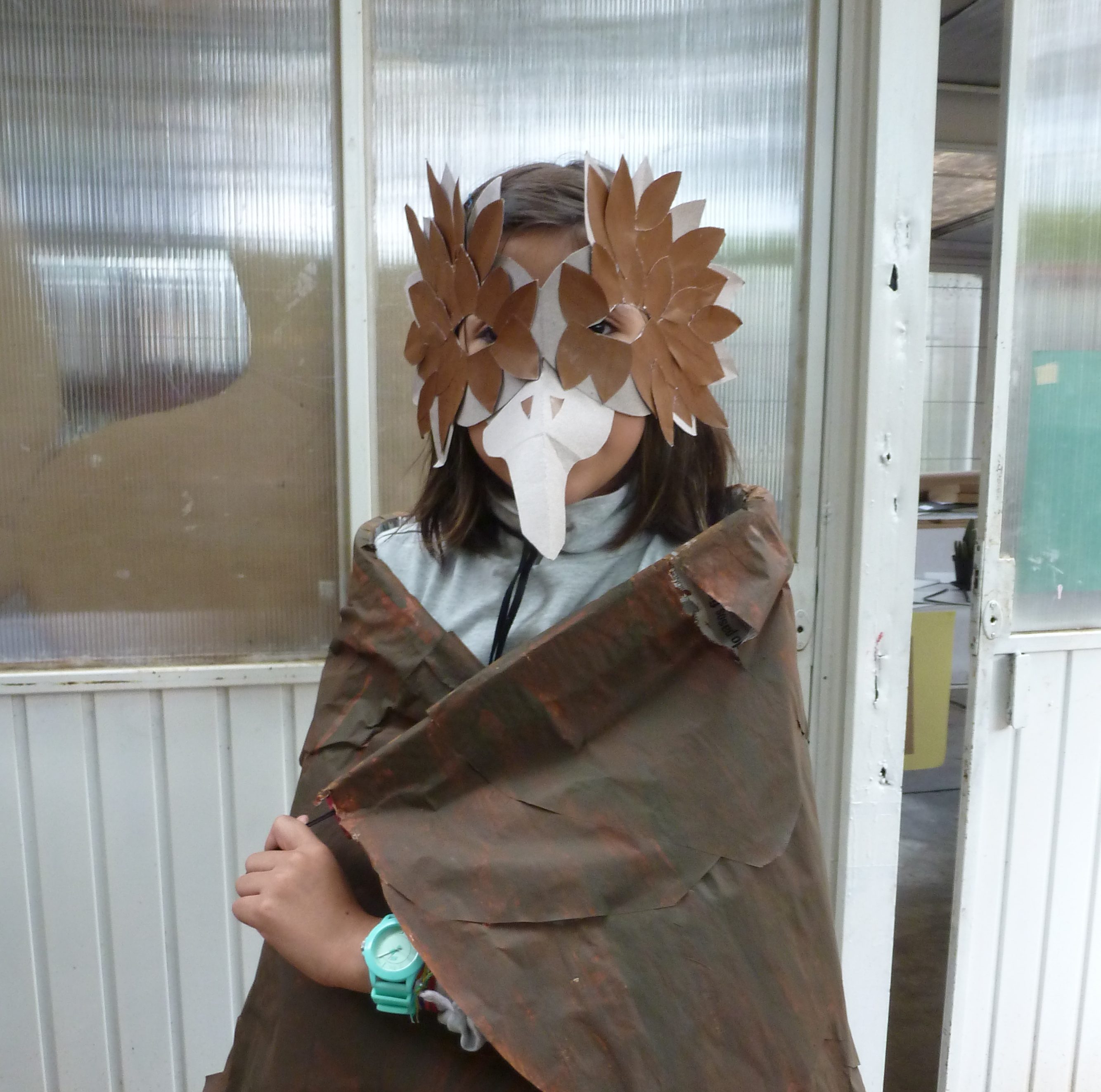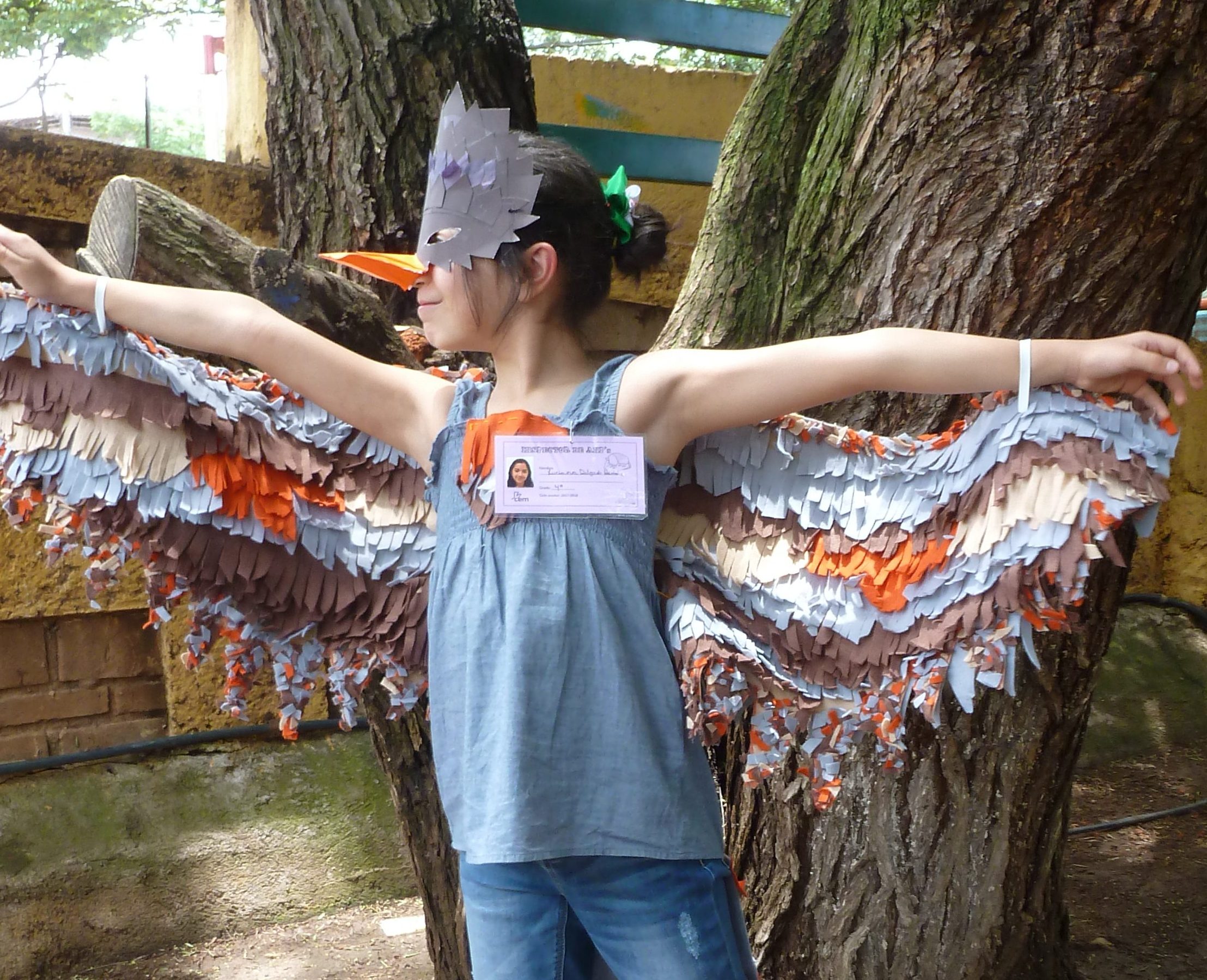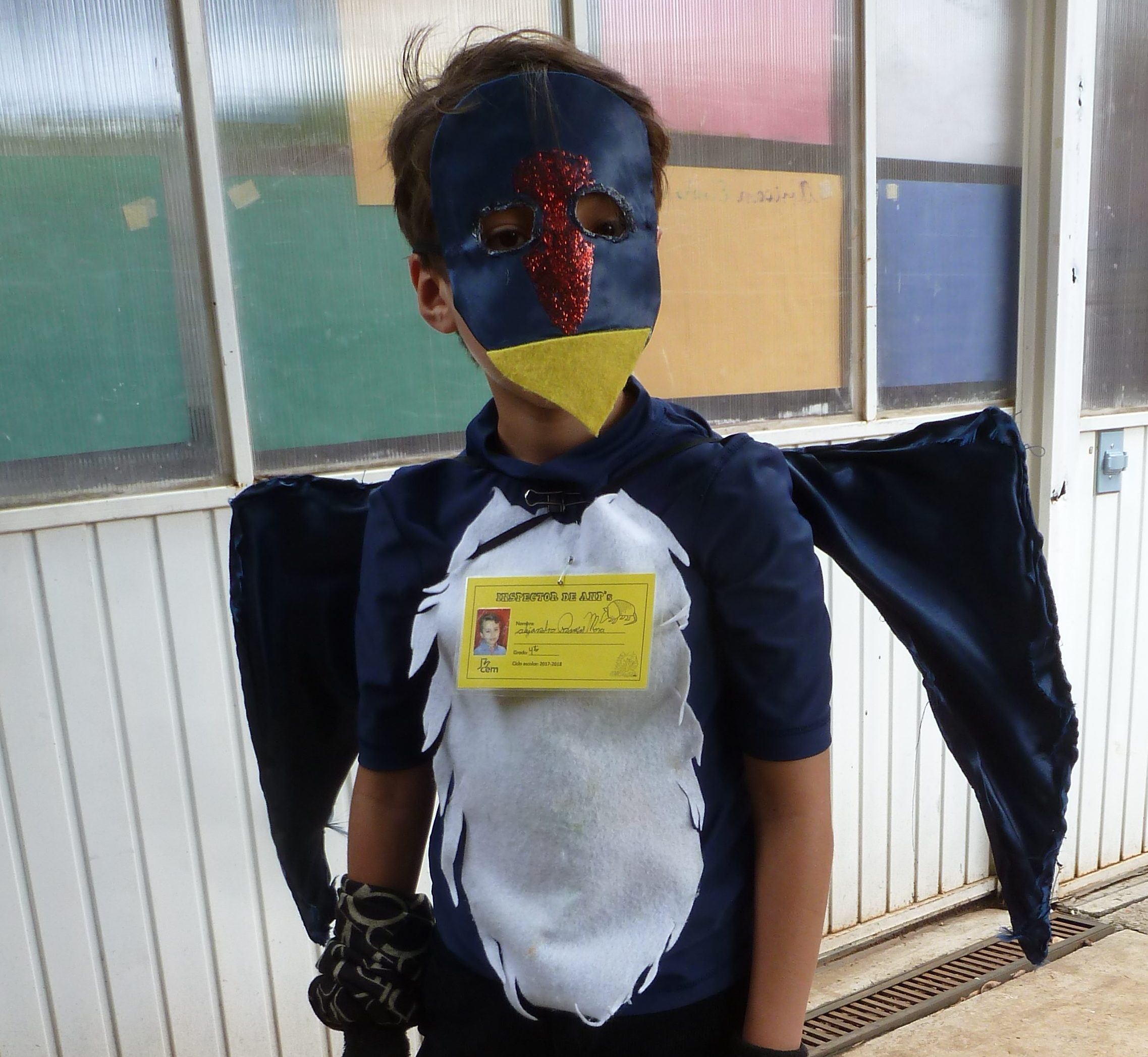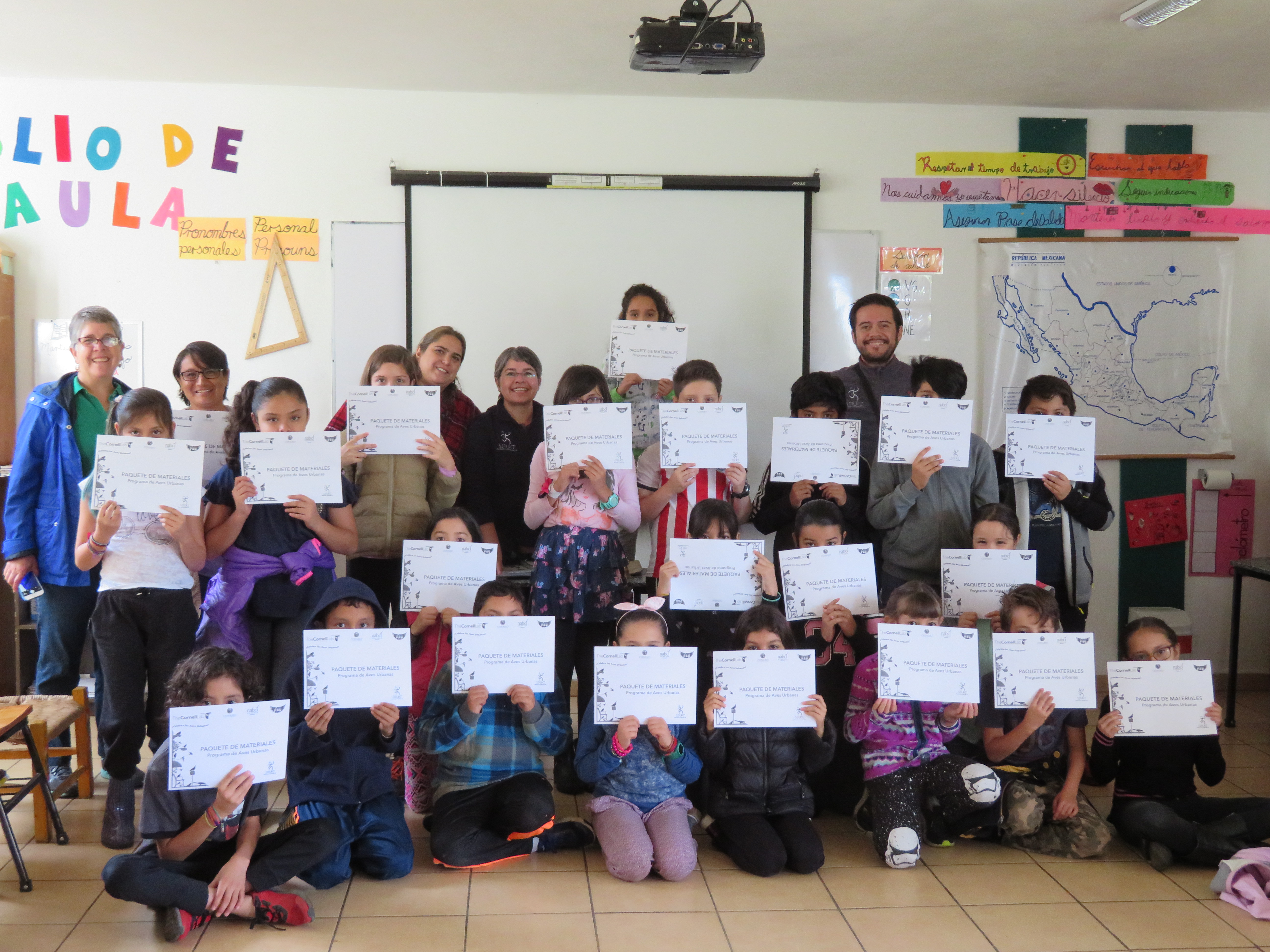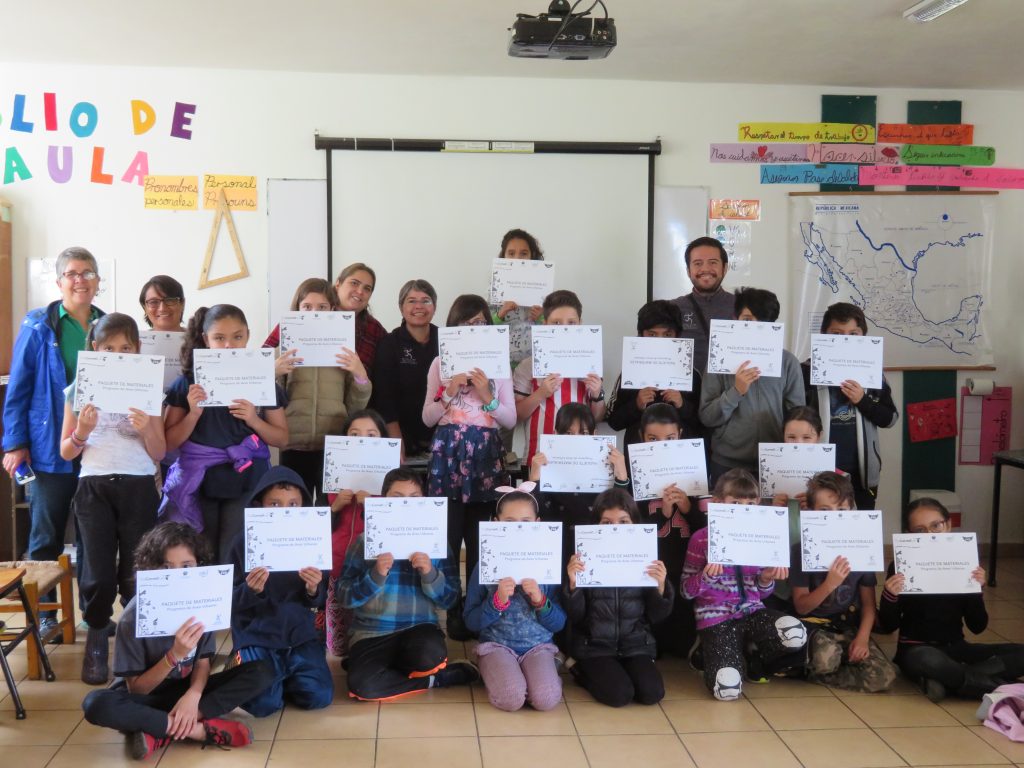 Photo ©
Siruki_Morelia_
Photo ©
Siruki_Morelia_
How the Interest Began:
A group of more than twenty students in the fourth year at the Morelia Educational Center (Centro Educativo Morelia) was participating in a project called “Protected Natural Areas” (Las Áreas Naturales Protegidas,ANP)). The students wanted to become nature “inspectors” and travel to a nature reserve in Michoacán, too. Nature inspectors are involved in monitoring, protecting, and increasing awareness in the community about the value of natural resources. Soon the students realized that to be inspectors they must first know what biodiversity meant in their school and in their community, and what species existed in their community.
One of the students asked: “why are we asking others to respect the environment and the species when we do not even know what species are around our school?” This question made the students get together, go outside to watch at the green spaces in their school for a different plant, animal and insect species, and learn about them in their school’s backyard. The students also noticed that different birds were visiting their school’s gardens! They began to ask themselves “what are these birds’ names? What do they eat? Where do they come from?”
Coordinators of the Urban Birds Program (Programa de Aves Urbanas, PAU) in Morelia, and Siruki Educación Ambiental, A.C. facilitated a workshop using materials from the “Celebrate Urban Birds in Mexico” kit. The students organized in groups and learned how to identify the 16 focal bird species. They also went on bird walks to identify the birds around their school. The educational materials were awesome! They found the images, maps, birds’ information, and the bird names very helpful. The information about the focal birds caused the students to ask about the all other birds they saw around their school.
Preparing for Flight: Diagnostics and Entertainment
The students began by what they knew about nature. Inside the classroom, they projected the images of the 16 focal species and their comments about each of the birds were recorded. It turned out that they knew the common names of some of the species, for example, the Inca Dove (Columbina inca) as “Tortolita”, the Barn Swallow (Hirundo rustica) as “Golodrina Tijereta” and the Broad-billed Hummingbird (Cynanthus latirostris) as “Colibrí ”. They also identified the sites where they had seen some of the species. The students thought they had seen ten of the 16 species, but they did not know all of their names and they were confused between the Great-tailed Grackle (Quiscalus mexicanus) and the Common Raven (Corvus corax).
With the help of the materials from “Celebrate Urban Birds in Mexico” kit the students, working as a team, learned to recognize the same images when they were projected again. They also learned the common name of the species and the team could say where in Mexico the focal species were located as well as an interesting fact about each species. This exercise was done was done for five weeks to increase their memory and retention of the birds. It was the game of the focal species! Thanks to this game, the students became more precise in the identification of each species. They also designed 16 riddles that asked about some characteristics of these focal species and that challenged them to remember data. To download “Guess Who? (“¿Advina quien?”) press here!
With all of this knowledge of the species in their heads, the students wanted to be able to see the birds in person! The teams explored different spaces around the school to find the best place to observe the birds. In the end, a soccer field was chosen because it had the largest space to observe birds.
There were four observation sessions to observe the focal species. The students were asked to have the materials about identifying the focal species, to wear dark clothes so they could go unnoticed by the birds, and to stay as silent as possible. These sessions lasted ten minutes. The children sat on one side of the field observing and recording. After the ten minutes, the students had another ten minutes to continue observing without recording. A designated person from each team made notes of the birds observed. All records, from training to the final monitoring days, were done without binoculars.
Living the Feathered Experience: The Observation
Of the 16 focal species, the children were able to identify 12 in the school: Broad-billed Hummingbird (Cynanthus latirostris) taking nectar from tabachin flowers and from sage; Barn Swallow (Hirundo rustica), flying over the soccer field taking mud from the goal area; Bewick’s Wren (Thryomanes bewickii) and Lesser Goldfinch (Spinus psaltria) both on the branches and trunks of the African tulip and tabachin flowers; Rufous-backed Robin (Turdus rufopalliatus) and Inca Dove (Columbina inca) flying over the field, perching on branches of trees and grass for looking for food; Vermilion Flycatcher (Pyrocephalus rubinus) perched on the protective structures over the goalposts and flying over the field catching insects; Canyon Towhee (Melozone fusca) looking for food on the ground and perched on branches; Golden-fronted Woodpecker (Melanerpes aurifrons) flying on the field; House Sparrow (Passer domesticus) in branches of trees, on the ground looking for food and flying over the field; Great-tailed Grackle (Quiscalus mexicanus) on the ground looking for food and flying the field; and House Finch (Haemorhous mexicanus) flying over the field. The Rock Pigeon (Columba livia), the American Kestrel (Falco sparverius), the White-winged Dove (Zenaida asiatica), and the Loggerhead Shrike (Lanius ludovicianus) were not seen.
The students also recognized other bird species such as the Blue Mockingbird (Melanotis caerulescens) which had a nest in a school tree, the Eurasian Collared Dove (Streptopelia decaocto) seen perching in at the tops of trees, the male Bronzed Cowbird (Molothrus aeneus) courting a female, the Groove-billed Ani (Crotophaga sulcirostris) flying in a group towards the stream near the school and the Turkey Vulture (Cathartes aura) soaring in the sky. At the end of the sessions, PAU Morelia was asked all the teams to download their data to the site in the Celebrate Urban Birds Data web page and the groups answered the opinion survey. Everyone promised to continue observing birds and reporting their observations.
In recognition of the effort made and to reinforce the training that the children experienced, the PAU Morelia Coordinators went to the classroom to give a talk about the birds, and then went out to observe birds in at the Santa María Stream next to the school. After this, they offered a kit of “Celebrate Urban Birds in Mexico” to each student so they could continue their learning at home. The Coordinators wrote the scientific names in their students’ bird guides to facilitate searching for data on the internet.
Sharing What They Learned: Parents and Family Assembly:
The students were so excited at the end of the school year that they decided to share the information they had learned about the twelve focal bird species they had seen with their parents. The 22 children, worked in pairs. Each pair chose one of these species (only the Grackle was not chosen) to gather more information about the bird’s life. They then created a small booklet with the information in both English and Spanish. They also designed a costume about the bird. They had to create their costumes using materials available in their homes and they received help from their family to make it!
The creativity of the participants caught flight! Fabrics, clothing, paper, cardboard, belts, and scarves were some of the materials used by the students. The students were very excited to present all they had learned about the birds they researched to their relatives. In the end, the relatives also learned about the birds.
The goal of the ANP was achieved! Getting to know the local urban birds helped the participants to value, protect, and better understand their natural environment.
The best part of the urban bird observations was…
The parents of the children said that their children remained highly motivated, even after the end of the school year. They saw their kids looking for birds when walking down the street when traveling and visiting relatives. They enthusiastically showed their “Celebrate Urban Birds in Mexico” materials to their friends and relatives to help explain the focal species! With the help of their parents, some downloaded the Merlin application on family cell phones.
Knowing the 16 focal species led to more interest and curiosity in the children. They were excited to continue learning about other bird species in the city of Morelia and around the world. The children were quiet and respectful when observing and recording the species. They recognized the value of the birds found around the school. It was no longer just a bird because now they knew the common and scientific name of the bird. It was awesome seeing the participants identify birds with the naked eye!
The activities promoted safety and improved self-esteem in some children, as they increasingly dominated the knowledge of the birds in question. At each opportunity, inside and outside the school, the children shared everything they knew about the focal species.
Now, they observe birds and enter data wherever they are! As they said: “the birds made us fly!”
Thanks to the Cornell Lab of Ornithology, the Urban Bird Program (PAU) of Mexico, CONABIO and NABCI for developing and sharing the material of “Celebrate Urban Birds in Mexico” kit, especially Marta del Campo, Tatiana Sánchez and Humberto Berlanga for supporting the initiative. Also, thanks to Siruki Educación Ambiental, A.C. for giving recommendations on the use of materials and supporting us PAU Morelia. To the managers of the Morelia Educational Center (Centro Educativo Morelia) for their willingness to explore new forms of meaningful learning. To Professor Sara Alejandra Fey Gómez for her support throughout the process in her English classes and in the elaboration of the booklet of the species presented in the closing assembly of the school year. To León Felipe Herrera Ramírez for his revisions and suggestions. Above all, we thank the children and their families who showed such a great capacity for amazement and enthusiasm when discovering their local birds.
Pictures and Written by: María de la Paz Ceja Adame (Teacher of the Centro Educativo Morelia School),
Morelia Amante Calderón and Adrián Gutiérrez Pérez (Coordinators of PAU Morelia)
Edited By: Ashley Calderon
